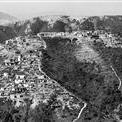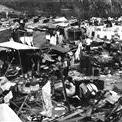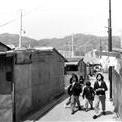-
History & Society
- Education in Pre-war Hong Kong
- History of Taikoo Sugar Refinery
- Hong Kong Products Exhibition
- Local Festivals Around the Year
- Post-war Industries
- Pre-war Industry
- The Hong Kong Jockey Club Archives
- Tin Hau Festival
- Memories We Share: Hong Kong in the 1960s and 1970s
- History in Miniature: The 150th Anniversary of Stamp Issuance in Hong Kong
- A Partnership with the People: KAAA and Post-war Agricultural Hong Kong
- The Oral Legacies (I) - Intangible Cultural Heritage of Hong Kong
- Hong Kong Currency
- Hong Kong, Benevolent City: Tung Wah and the Growth of Chinese Communities
- The Oral Legacies Series II: the Representative List of the Intangible Cultural Heritage of Hong Kong
- Braving the Storm: Hong Kong under Japanese Occupation
- A Century of Fashion: Hong Kong Cheongsam Story
Geography & EnvironmentArt & Culture- Calendar Posters of Kwan Wai-nung
- Festival of Hong Kong
- Ho Sau: Poetic Photography of Daily Life
- Hong Kong Cemetery
- Sketches by Kong Kai-ming
- The Culture of Bamboo Scaffolding
- The Legend of Silk and Wood: A Hong Kong Qin Story
- Journeys of Leung Ping Kwan
- From Soya Bean Milk To Pu'er Tea
- Applauding Hong Kong Pop Legend: Roman Tam
- 他 FASHION 傳奇 EDDIE LAU 她 IMAGE 百變 劉培基
- A Eulogy of Hong Kong Landscape in Painting: The Art of Huang Bore
- Imprint of the Heart: Artistic Journey of Huang Xinbo
- Porcelain and Painting
- A Voice for the Ages, a Master of his Art – A Tribute to Lam Kar Sing
- Memories of Renowned Lyricist: Richard Lam Chun Keung's Manuscripts
- Seal Carving in Lingnan
- Literary Giant - Jin Yong and Louis Cha
Communication & Media- Hong Kong Historical Postcards
- Shaw Brothers’ Movies
- Transcending Space and Time – Early Cinematic Experience of Hong Kong
- Remembrance of the Avant-Garde: Archival Camera Collection
- Down Memory Lane: Movie Theatres of the Olden Days
- 90 Years of Public Service Broadcasting in Hong Kong
- Multifarious Arrays of Weaponry in Hong Kong Cinema
-
History & SocietyGeography & EnvironmentArt & Culture
-
View Oral History RecordsFeatured StoriesAbout Hong Kong Voices
-
Hong Kong MemoryHome of the Past: From Squatters to Public HousingRecently Visited
Temporary Housing
In 1949, the political instability in China had resulted in large influx of migrants into Hong Kong. By the early 1950s, the squatter population was estimated to be 300,000 out of a total population of two million. Squatter structures occupying government land which was ready for development were cleared. Government had already set aside four ‘Designated Areas’ where the squatters might put up in an orderly arrangement of huts of standard design. These areas, located at Mount Davis, Shau Kei Wan, King’s Park(Ho Man Tin) and Lai Chi Kok, were relatively remote from the main built-up areas and were not popular. They were also not big enough to accommodate all the incoming squatters who were erecting structures on hillsides at the periphery of the urban areas. In 1951 a new policy was established. A number of small areas were recognized for ‘approved’ type resettlement structures and were meant for people with some claim as residents of Hong Kong. Accommodation would be in semi-permanent bungalows which had to conform to some structural standards laid down (mainly concerned with fire resistant construction). There were also a couple of large ‘Tolerated Areas’ which was designated for the rest of the squatters and there was little control on the type of structures (in most cases wooden huts) erected except in respect of roads, firebreak, and communal water supply and latrines. As these ‘Tolerated Areas’ were in the more remote areas of the city, this created problems of access for work and daily life necessities.
Nevertheless, these measures could not be regarded as successful. Construction cost of huts of both ‘Approved Areas’ and ‘Tolerated Areas’ was high, quite beyond the means of most of the squatters. The location of these areas was also remote from the main urban area. Consequently, squatter areas kept on appearing on hillsides and were quite beyond the control of the authority.
Another type of temporary housing was ‘Licensed Areas’ (redesignated as ‘Temporary Housing Areas’ in the early 1980s). Families could erect their own huts that contained basic services, after they were made homeless due to demolition of their squatter huts which were built on government land, private land or roof-tops after 1964. Compared with ‘Approved Areas’ and ‘Tolerated Areas’, these ‘Licensed Areas’ were usually located in some more accessible sites.Photos
Copyright © 2012 Hong Kong Memory. All rights reserved.













